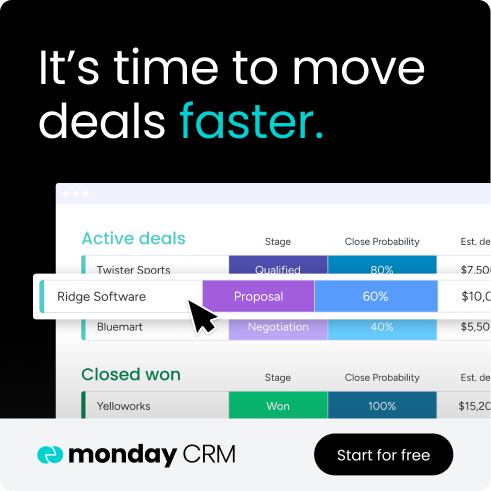Many businesses adopt a CRM system quickly, but jumping in without a clear plan is a mistake. A CRM strategy ensures your platform actually supports growth — guiding how you use data, processes, and people to reach business goals. Without it, software is just a tool with no direction.
In this guide, we’ll break down what a CRM strategy is, why it matters, and how to build one in 10 steps. You’ll also see real-world CRM strategy examples and discover how monday CRM’s AI-powered features make execution easier and more effective.
Try monday CRMWhat is a CRM strategy and why does it matter for growth?
A CRM strategy is a company-wide plan for managing relationships with prospects and customers. The purpose of a CRM strategy is to grow revenue and increase profit by combining people, processes, and technology to deliver better customer experiences.
It’s important to note the difference between a CRM system and a CRM strategy. Many people use the term CRM to describe the software itself. In reality, the platform is only part of the picture. A CRM strategy outlines how your teams will use that software, along with processes and data, to engage potential customers, convert leads, and retain loyal clients.
When built well, a CRM strategy gives your organization direction. Instead of working in silos or relying on guesswork, teams can make decisions backed by reliable data and use one platform as a shared source of truth. The result: stronger collaboration, faster sales cycles, and greater customer satisfaction.
The benefits of building a CRM strategy
A CRM strategy is about more than organizing contacts — it’s about creating a system that works for your team and drives measurable business results. Some of the core benefits include:
- Stronger collaboration: Break down communication and workflow silos between sales, marketing, and customer service teams so that everyone’s working from the same playbook.
- Improved customer experience: Deliver a consistently satisfying experience every time a customer interacts with your business by keeping contact data and communication history in one place.
- Smoother pipeline management: Keep track of your leads, prospects, and customers as they move through your pipeline. You’ll always know where everyone stands and what needs attention next.
- Increased revenue: Identify the strongest opportunities for your sales teams to target and prioritize the deals most likely to close.
- Better personalization: Create marketing campaigns that actually speak to your audience based on real data that gives you a look into customer behavior, engagement levels, and preferences.
- More data-driven insights: Gather customer data at every touchpoint and turn it into actionable insights that help you improve performance and make more reliable decisions.
Why a CRM system is central to your strategy
The platform itself is what makes execution possible. A CRM system enables you to manage customers across the entire lifecycle, from first contact to long-term retention. By consolidating all interactions in one place, every agent and team member works from the same information.
According to The state of sales technology 2025 report, 81% of respondents said they were considering replacing their CRM within the next year. One common reason: a lack of a cohesive CRM strategy to guide adoption. By building the strategy first, you make it easier to choose the right software and maximize ROI.
The role of CRM in marketing and sales strategies
Your CRM is how you turn strangers into customers and customers into loyal advocates. A well-executed CRM strategy supports both marketing and sales by mapping the customer journey, personalizing communication, and streamlining the handoff between teams.
When you integrate email marketing into your CRM approach, you can send personalized messaging that nurtures prospects and re-engages existing customers. And by using accurate, shared data, your sales reps can build stronger relationships that translate into long-term loyalty.
Building a CRM communication strategy
A CRM communication strategy ensures every touchpoint — whether email, phone, live chat, or social — is consistent and on-brand. Centralizing communication data in one platform prevents duplication, reduces customer frustration, and makes it easy to personalize outreach at scale. With AI-driven features, teams can even generate tailored messages automatically, ensuring timely, relevant interactions that strengthen trust.
How to prepare for a successful CRM strategy
Before building your CRM strategy, there are several considerations to keep in mind. Here are the essential elements you need to address ahead of time, prior to jumping into building your strategy from scratch:
- Audit your business: Conduct a SWOT analysis to identify your company’s current strengths, weaknesses, opportunities, and threats.
- Refine your vision: Develop a clear vision that your teams can collaborate on and execute, such as increasing revenue, improving customer relationships, and enhancing the overall customer experience.
- Audit your customer data: Understand your target customers and their typical journey, such as demographics, touchpoints, and product feedback, and identify areas for improvement in your interactions with them.
- Align people, processes, and systems: Ensure different teams use the same customer data and workflows by integrating systems into a unified CRM platform.
- Prioritize change management: Map how teams will use the CRM, anticipate resistance, and plan training programs to drive adoption and align organizational culture. This kind of adoption plan is the foundation of a successful CRM implementation strategy.
- Set up measurement and feedback from the start: Decide on KPIs — like retention rate, conversion rate, or average sales cycle — and build a plan for monitoring and refining strategy over time.
The CRM strategy framework: 10 key steps
Now that you know what defines a successful CRM strategy and how it can benefit your business, let’s look at how to create one for your organization. But first, here’s a quick look at the 10 steps every CRM strategy should cover:
| Step | What to do |
|---|---|
| 1. Define CRM strategy goals | Align goals like reducing churn or shortening the sales cycle with overall business objectives. |
| 2. Define your target customer | Build buyer personas and understand customer pain points. |
| 3. Map the customer journey | Identify touchpoints, interactions, and gaps in the buying experience. |
| 4. Plan a 360° customer experience | Align marketing, sales, and service to deliver seamless interactions. |
| 5. Set KPIs | Track measurable metrics such as churn, retention, and customer satisfaction. |
| 6. Leverage data | Centralize insights across teams in one CRM dashboard. |
| 7. Integrate existing tools | Connect your CRM with the software your team already uses. |
| 8. Personalize experiences | Use data to deliver tailored content and customer interactions. |
| 9. Automate workflows | Streamline repetitive tasks like lead routing and follow-ups. |
| 10. Track performance | Use dashboards and feedback loops to refine strategy over time. |
And now for a deeper look at each step:
Step 1: Define your CRM strategy goals
First, you need to determine what you want to achieve with your customer relationship management plan. For example, perhaps you want to shorten your sales cycle, increase your customer satisfaction survey scores, or reduce churn. Ensure your CRM strategy goals align with your overall business goals and objectives, and build SMART goals. Some examples of goals for your CRM strategy might include:
- Facilitating communication and collaboration in your sales team
- Reduce siloed data between teams
- Replace repetitive manual administrative tasks with CRM automations
Once you’ve defined your goals, evaluate whether or not you can realistically achieve them with your current resources. For example, do you have enough team members and the right tools, like a CRM system, to accomplish your goals? Setting CRM strategy goals keeps you focused on your business and its bottom line.
Step 2: Define your target customer

It’s essential to understand who your customers and prospects are so that you can get a strong grasp on their pain points and needs. A good place to start is to create a buyer persona, which can help you understand your target client and tailor the most relevant tactics and messaging to their unique preferences to maintain strong customer relationships.
You can combine your existing data with new research to build your ideal customer profile. For example, you could:
- Use website analytics to gather demographic visitor data
- Gather data about users from social media channels
- Interview your sales and customer service teams
- Send customers surveys for targeted feedback
- Hold a focus group with customers/clients
Use a buyer persona template to help you get to know your target market based on demographics, geography, needs, interests, and behavior.
Step 3: Outline your customer journey
Once you’ve defined your target customer, you need to map out their entire journey from the first touchpoints to the closing sale. Analyze demographic data to find out where they spend their time online. Understanding their online habits can help you identify where and how to connect with them.
Here are some key questions to try and answer when mapping the customer journey:
- Which team is interacting with the customer at each stage?
- How can these interactions be improved?
- Is this your target customer’s preferred style of communication?
- Which content does your customer interact with the most or the least?
- What is the customer trying to achieve?
- What challenges does the customer face?
Based on the answers you find, you want to go back to your buyer personas and make sure that they’re still relevant in the context of customer journeys. These stages can be done simultaneously as general customer research, since your findings from one can influence the other.
Step 4: Plan your 360-degree customer experience
The next step in your strategy is ensuring you have the resources and processes in place to create a 360-degree customer experience. To do this, check each team’s roles and responsibilities. For example:
- Does your marketing team have the skills and tools they need to analyze customer needs and gather information effectively?
- Can your sales team automate any sales processes to increase speed and efficiency?
- Is your customer service team capable of smoothly onboarding and supporting customers?
By creating a seamless customer experience, you can make sure there are no holes in your CRM strategy where your customers may feel lost or misunderstood. This helps different teams seamlessly engage customers at every touchpoint.
Step 5: Define your KPIs
Having defined your CRM strategy goals in the first step, you now need to give your teams some concrete targets to work towards. Some metrics you may wish to measure include:
- Sales cycle length
- Sales close rate
- Customer satisfaction
- Customer retention
- Customer churn
- Profitability per customer/account
For example, using a SMART goal, you might ask your customer service team to increase customer satisfaction rates by 3% in the next quarter. Or, if a CRM strategy goal for the after-sales team is to increase customer retention, an important KPI might be to increase the number of renewal opportunities in the pipeline year-to-date (YTD) compared with the same period last year.
Step 6: Leverage data to improve productivity
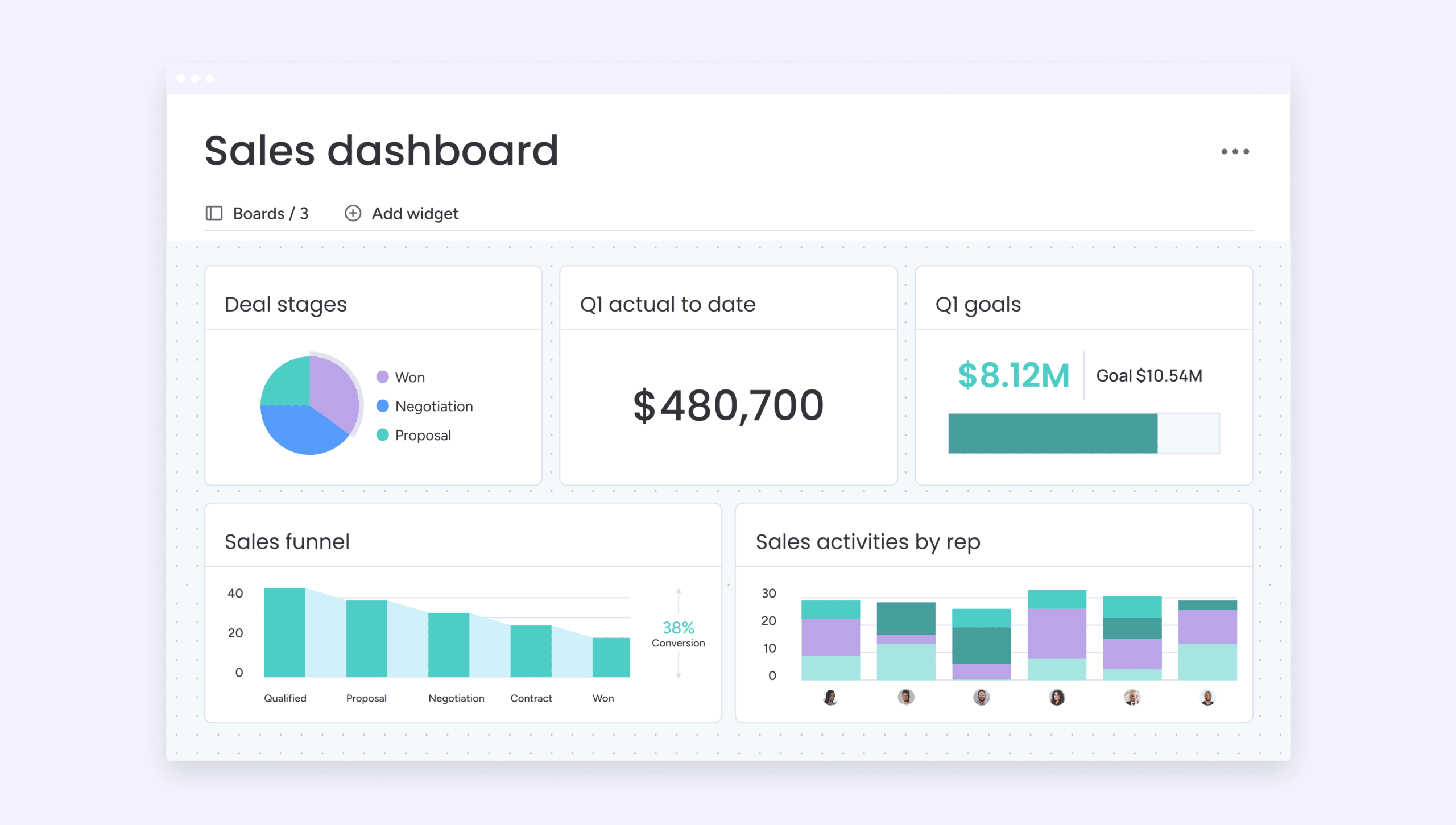
Defining what information you’ll collect, how it will be stored, and how teams will use it is crucial for a successful CRM strategy. When customer data from marketing, sales, and service lives in one place, everyone can work from the same source of truth. This prevents duplicate outreach, reduces errors, and saves time.
To make this work, build processes into your CRM strategy such as employee training, regular data audits, and clear input standards. With these foundations in place, teams can turn raw information into insights that improve productivity and uncover new opportunities. A platform like monday CRM helps bring this strategy to life by consolidating data in one dashboard and making it easy to analyze in real time.
Try monday CRMStep 7: Integrate your existing work tools
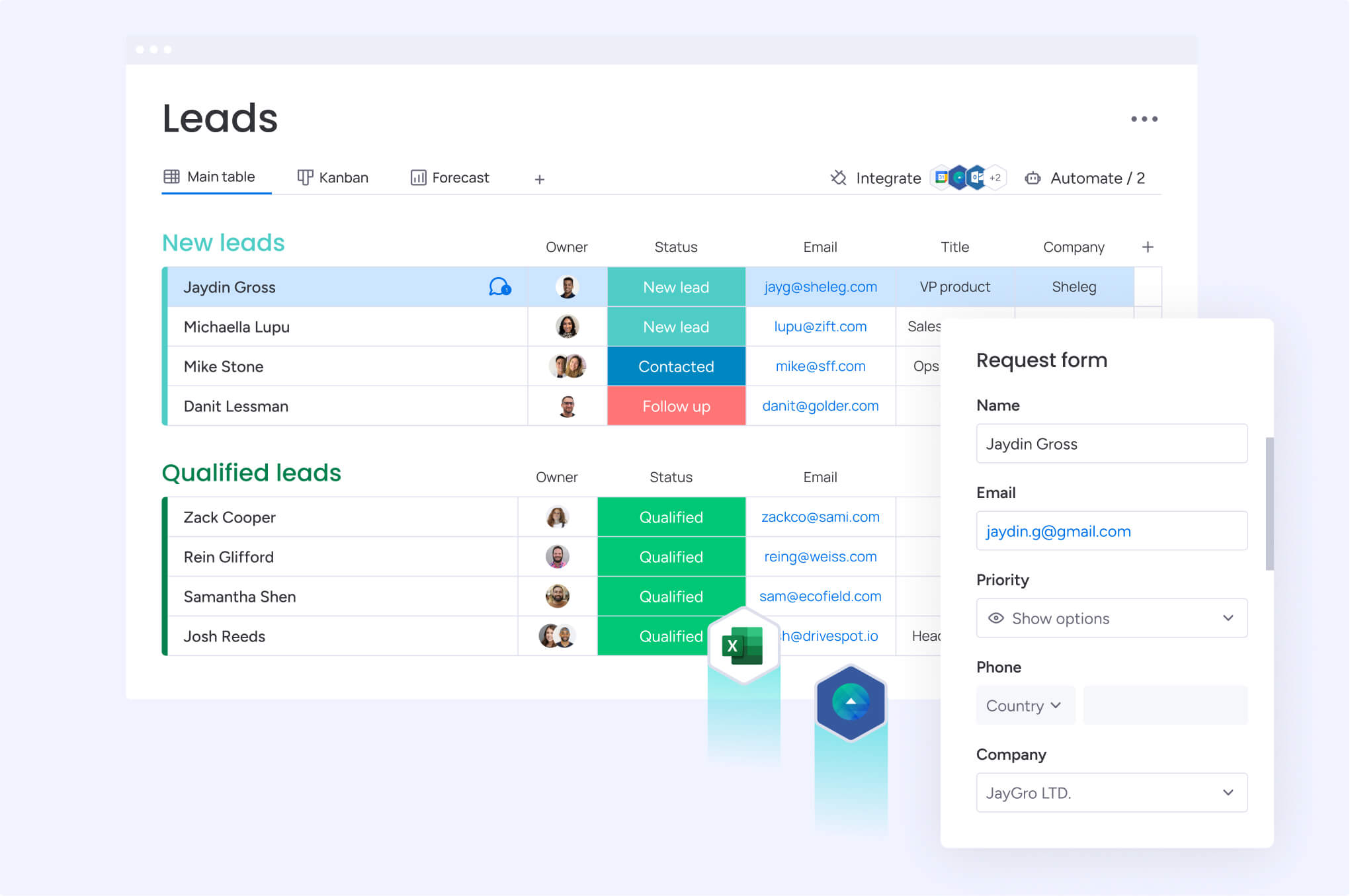
CRMs are meant to connect with the tools you’re already using in your daily workflows. When building a CRM strategy, take stock of your most important work tools by making a list of all the software platforms your team is using and paying for.
Your goal here is twofold: First, remove redundancies where there may be overlap between CRM features and tools you already use, and second, find areas where the tools you use most often can integrate with CRM processes. For example, you may not need a separate ticketing system, automation platform, or analytics tool if those workflows can run inside your CRM.
Step 8: Deliver personalized customer experiences
At this stage, between mapping out your customer journey, creating buyer personas, and learning more about your audience through data, you should have a detailed understanding of who your customers are. These details should be used to create personalized customer experiences at every stage of the sales cycle.
As part of your CRM strategy, make sure you have your personalization strategy built into how you plan on utilizing your software. This entails having the right data analytics set up, as well as sales and marketing processes and templates in place that can be personalized based on each client’s unique behaviors and preferences.
Step 9: Reduce costs with automation
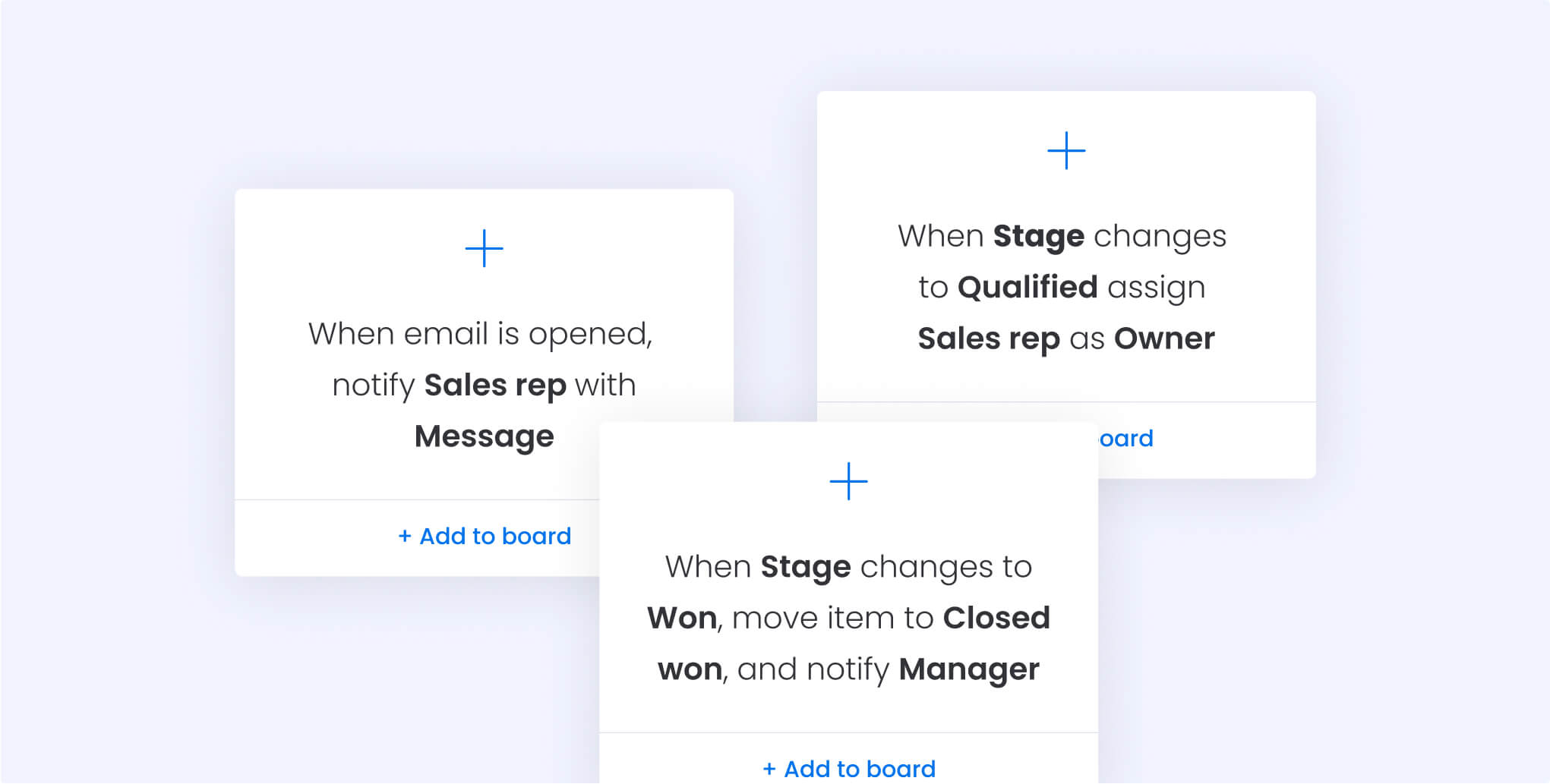
With a CRM system, you can save time and money by automating repetitive administrative tasks, such as feeding lead data into your sales pipeline. For example, instead of manually typing in data, you can set up your lead capture forms to automatically sync with your pipeline.
Another benefit of automation is that you can set up email templates correctly formatted with your tone of voice and personalized with the customer data to save time and boost engagement. Automating your sales processes will free up additional time for your sales reps to focus on more high-value tasks. They can invest this time nurturing leads and closing more deals, shortening the sales cycle, and reducing costs.
Step 10: Track your CRM performance
Finally, a CRM strategy only works if you measure its impact. Use dashboards and reports to track progress against your KPIs, spot what’s working, and identify areas for improvement. Regular reviews help you optimize processes, improve customer experiences, and refine your approach over time.
It’s also important to measure adoption. Gather feedback and usage data from your team to see which features add the most value and where adjustments are needed. This makes your strategy more effective today — and makes future CRM migration or scaling much smoother.
Finally, you want to ensure you track your team’s performance to ensure they’re achieving their individual targets and meeting your CRM strategy goals. You can easily track performance with the help of CRM reporting and analytics features that come built-in with most CRM software.
Bonus step: Make use of AI

AI is now standard in most CRM platforms, so you should consider how to incorporate its features in your CRM strategy. For example, you could use AI in sales to:
- Turn ideas or meeting outcomes into actionable tasks to move deals forward automatically
- Generate personalized AI emails that hit just the right note every time
- Craft polished content like pitch decks and email campaigns for every step of the customer lifecycle
- Summarize call transcripts, email chains, and meeting notes in an instant
- Build formulas for the most complex pipeline reporting needs using natural language
B2B vs. B2C: Tailoring your CRM strategy
While CRM systems might look similar on the surface, the way you actually use them depends entirely on who you’re selling to. Managing relationships with other businesses is a completely different beast compared to individual consumers. It’s important to tailor your CRM strategy to the customer you’re selling to, whether it’s a business or individuals. Here are some things to keep in mind for both approaches.
| Aspect | B2B CRM strategy | B2C CRM strategy |
|---|---|---|
| Relationship length | Long-term partnerships | Shorter transactions |
| Decision process | Multiple stakeholders | Individual or household decisions |
| Data focus | Company details, contact roles, deal stages | Personal preferences, purchase history, behavior |
| Communication | Professional, consultative, relationship-driven | Personalized, brand-focused, emotion-driven |
| Success metrics | Deal size, customer lifetime value, retention | Conversion rates, repeat purchases, engagement |
The bottom line? Your CRM strategy should match how your customers actually buy from you, not just how you want to sell to them.
Unlock your CRM strategy’s potential with monday CRM’s automation and AI
Using more automation and AI may only make up a part of your CRM strategy, but they make a big impact on how efficiently and productively your team works. AI-powered systems like monday CRM put automations front and center to make it easier for teams to breeze through manual tasks and focus on more creative and strategic ventures.
Driven by AI, monday CRM helps teams work smarter, not harder, so that every team member can work towards achieving company goals outlined as part of the CRM strategy. Whether it’s increasing incoming leads or building a more personalized customer journey, monday CRM can help any organization execute its CRM strategy seamlessly without requiring a steep learning curve or any technical skills.
Let’s take a closer look at some of monday CRM’s features that help teams action their CRM strategies.
Automated lead management
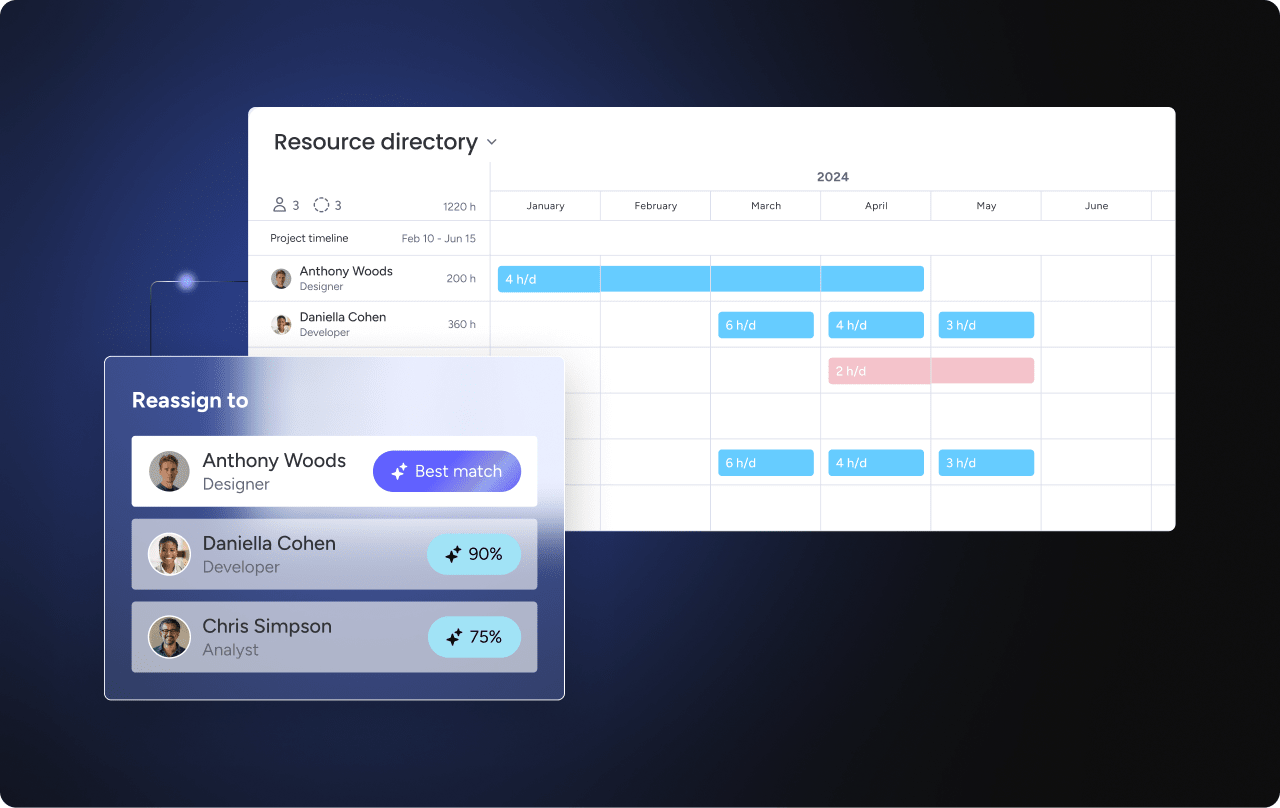
In monday CRM, users can use AI and automation for smoother lead management. Score new leads based on behavior that shows likelihood to convert, route new prospects to the right agents based on skill level and availability, and keep them engaged with personalized automated follow-ups.
Predictive analytics and insights
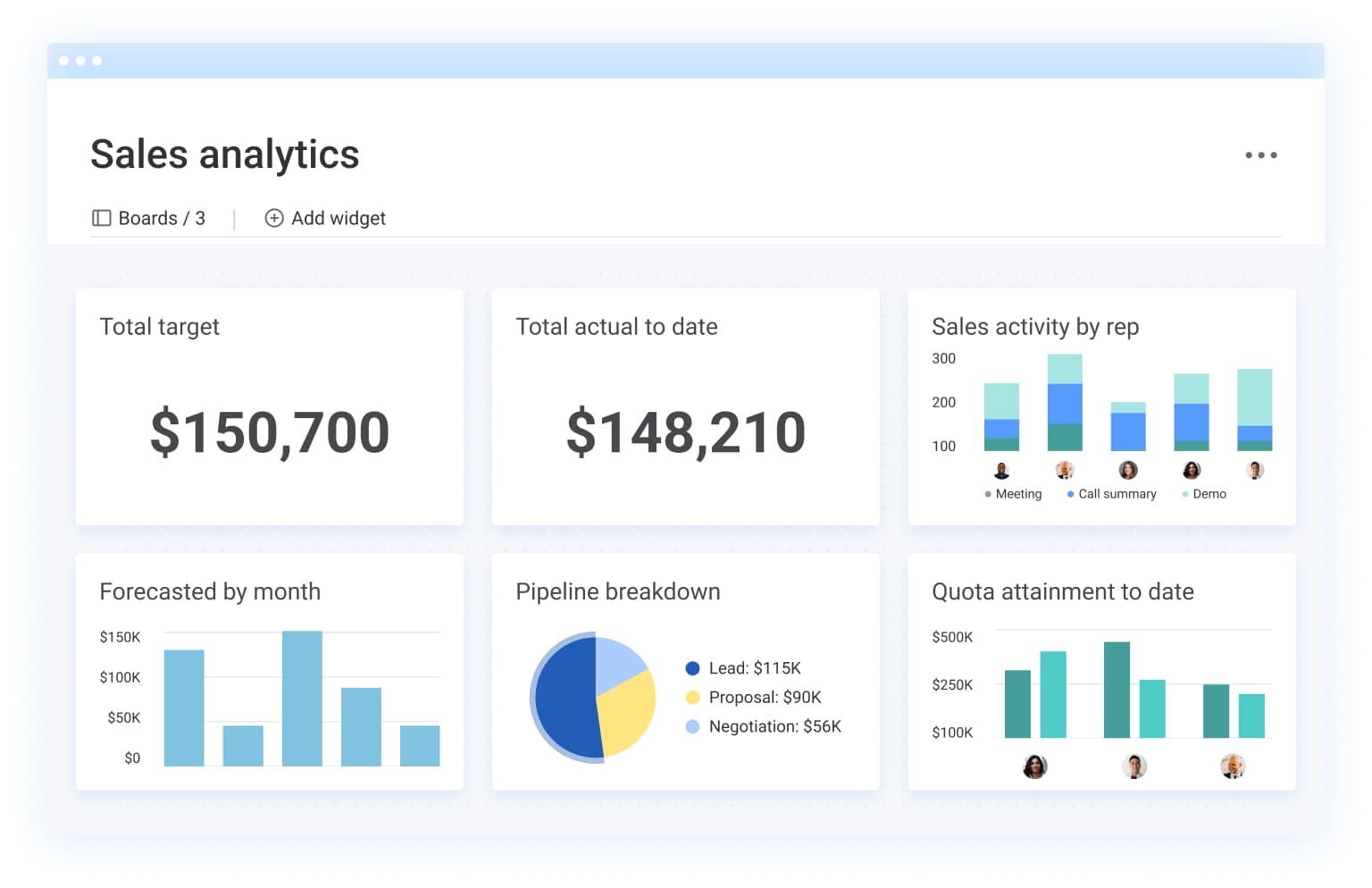
For teams that want to improve data management in their CRM strategy, monday CRM gives you access to comprehensive dashboards, automated reports, and AI sales forecasts and predictive analytics. This data makes it easier to get reliable information for on-the-spot decision-making and gives you insights into workflows that need improvement as well as customer preferences.
AI-powered workflow automation
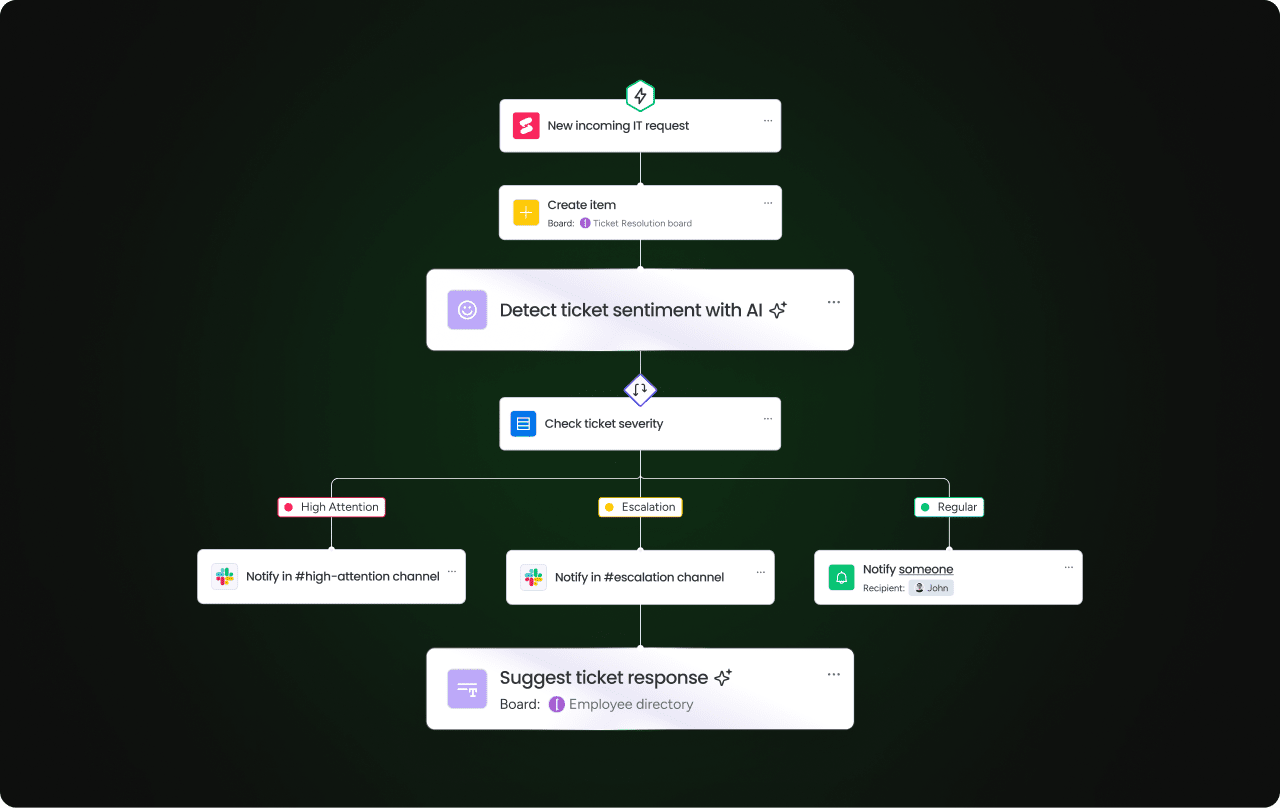
Build custom workflows with monday CRM to turn mundane repetitive tasks into automations that work behind the scenes. For example, create automated customer follow-ups when they haven’t responded to an email in a few days, trigger automated approval workflows when a status is updated, and generate reports on a daily or weekly basis to keep track of deal progress.
Generative AI for personalization
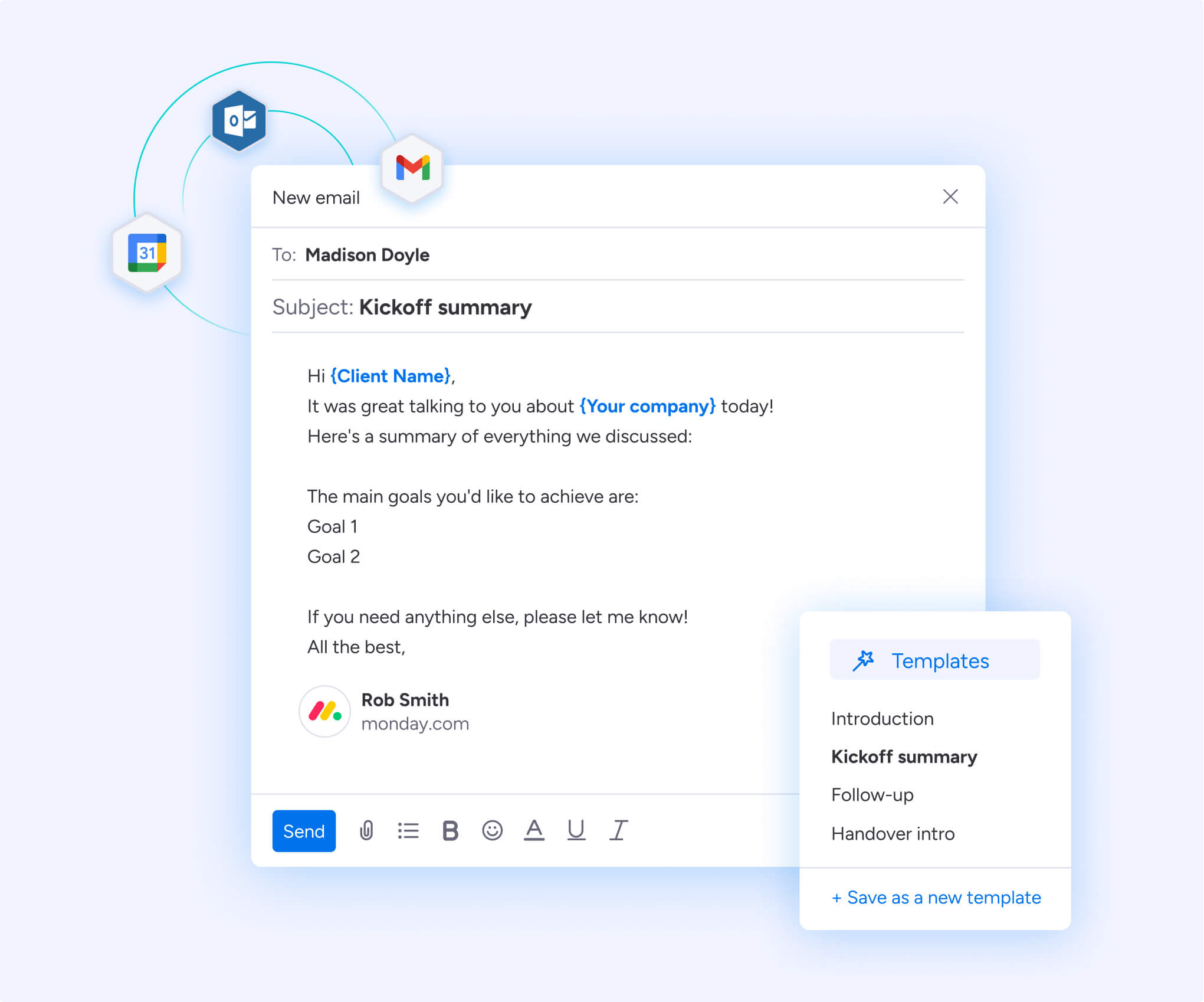
The platform helps teams optimize every touch point with personalized content generated by AI. Teams can generate tailored emails and campaigns based on customer engagement levels, previous purchases, and communication history. Additionally, sales reps can create individualized sales pitches that address a customer’s unique pain points and challenges.
Try monday CRMCRM strategy examples: Real-world case studies of CRM strategies in action
Real companies are using CRM strategies to build stronger business foundations, improve workflows between teams, and create better end-to-end customer experiences. Here’s a look at two unique CRM strategy examples.
KC Petroleum
KC Petroleum, a petroleum products company in the Southeastern U.S., was struggling to scale because teams relied on spreadsheets, emails, and verbal updates. Without a clear CRM strategy, customer data lived in silos and reporting was time-consuming.
Leadership built a CRM strategy around centralizing customer data, improving collaboration between field and office staff, and gaining real-time visibility into sales performance. To execute, KC Petroleum chose monday CRM for its adaptability and ease of use. Here’s what the company’s Business Development VP Christopher Stone had to say:
Once we started using monday CRM, it became more than just a CRM. All communications in our company go through it now.
The result was company-wide adoption, automated reporting that saves more than 25 hours a month, and better visibility for leadership and frontline teams alike.
BioPak
BioPak, a B Corp-certified leader in sustainable packaging, needed a CRM strategy that could scale across five countries and support rapid growth. Managing 900+ live projects with spreadsheets and email wasn’t sustainable, so leadership defined a CRM strategy built on the strategic pillars of centralizing customer and project data, automating manual sales processes, and improving visibility across the pipeline.
By adopting monday CRM alongside monday work management, BioPak turned those strategy pillars into action. Sales reps now track opportunities in one place, automate follow-ups, and collaborate seamlessly with cross-functional teams. Meanwhile, leadership relies on dashboards and predictive insights to manage revenue and spot bottlenecks early.
As Trevor Rumble, Product & Innovation Director, says: “If it’s not in monday.com, it didn’t happen.”
The future of CRM: AI-driven innovation
CRMs are quickly evolving from record-keeping systems into growth engines powered by artificial intelligence. With predictive analytics to score leads, recommend next best actions, and forecast sales with greater accuracy, AI-powered CRMs are doing more than ever before. Generative AI is helping teams create tailored proposals, emails, and campaigns in seconds, while workflow automation eliminates repetitive tasks that once slowed down productivity.
In the near future, CRM will go even further: unifying omnichannel customer data, surfacing insights automatically, and enabling businesses to deliver personalization at scale. Companies that invest in CRM strategies built on AI and automation today will be the ones that lead their industries tomorrow.
Manage your CRM strategy with the right platform
Building a CRM strategy from scratch can feel overwhelming, but the right platform makes the process easier. Preloaded with customizable templates, automations, and AI features, monday CRM helps teams put strategy into action without a steep learning curve.
As customer expectations and technologies continue to evolve, monday CRM gives you the flexibility to adapt your workflows, connect your tools, and personalize every customer journey. With one centralized system for sales, marketing, and service, your teams can collaborate seamlessly and focus on what matters most: building stronger relationships and driving growth. Try monday CRM and turn your CRM strategy into tangible results.
Try monday CRMFAQs
How do I choose the right CRM software for my business strategy?
Choosing the right CRM system begins with assessing your actual needs instead of looking at impressive features. Map out your sales process, identify pain points, and consider your team’s tech comfort level. Look for systems that integrate with tools you already use and can grow with your business. Most importantly, get your team involved in the decision since they’re the ones who’ll use it daily.
What are the key components of a successful CRM strategy?
A solid CRM strategy needs clear goals, defined processes, and buy-in from your entire team. Focus on data quality standards, customer journey mapping, and integration with your existing tools. Create a plan for training and ongoing support, and regularly review and optimize your strategy to keep everything running smoothly.
What is the best CRM strategy for a small business?
The best CRM strategy for a small business should be simple yet focused. Depending on your business’s goals, you should start with elements like lead tracking, contact management, and basic automation. Choose scalable and user-friendly software like monday CRM that doesn’t require extensive training. It’s worth noting that small businesses are likely to benefit more from consistent use of basic features rather than adopting a complex system that will gather dust.
How can CRM improve my customer acquisition strategy?
CRM helps improve customer acquisition strategies by turning lead chaos into organized opportunities. Track where your best leads come from, identify patterns in successful conversions, and automate follow-ups so nothing falls through the cracks. Use lead scoring to prioritize hot prospects and nurture sequences to keep lukewarm leads engaged.
What is a CRM data strategy and why is it important?
A CRM data strategy determines what information your organization will collect, how you organize it, and who can access it. Without clear standards, you end up with unreliable data that can do more damage than good. Define what data matters for your goals, establish input standards, and create regular cleanup processes. A good data strategy should lead to better decision-making and personalization that converts.
What is CRM strategy consulting?
CRM strategy consulting involves experts helping businesses design or optimize their CRM framework. Consultants can audit current systems, recommend the right software, and create adoption plans to maximize ROI.

